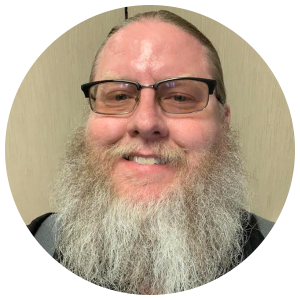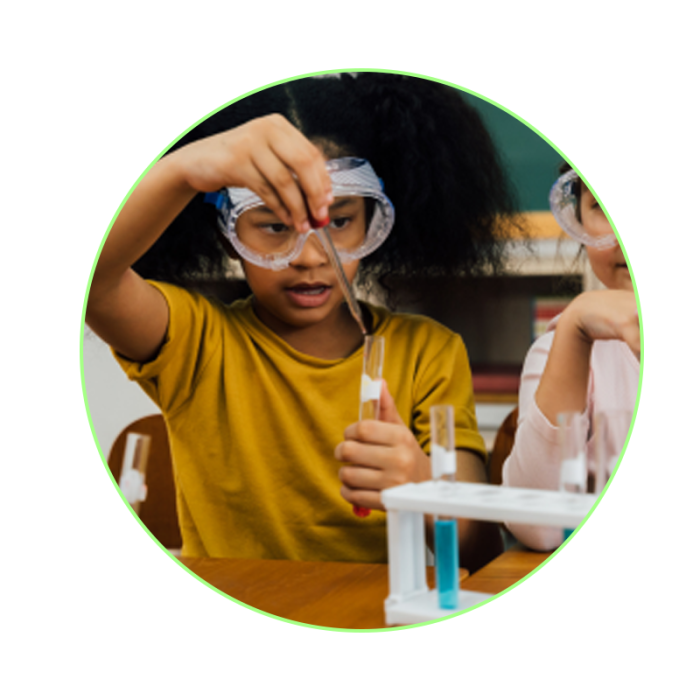Customer Profile
- Name: Mike Apffel and Michelle Serrano
- Role: Science Teachers on Special Assignment (TOSA) as science coaches
- District: The Hemet Unified School District in Hemet, CA, has 17 elementary/elementary-middle schools with a TK-5 enrollment of 10,744 students. Approximately two-thirds of the students are of Hispanic or Latino ethnicity. K-5 has roughly 1,500 English Learners from 22 different language groups, with the majority being native Spanish speakers. Approximately 86% of students are eligible for free/reduced lunch programs, plus a state grant enables the district to provide free breakfast and lunch to all students. The district’s schools are all Title I schools.
- Challenge: Select a new science curriculum for grades K – 5 that is NGSS-aligned, teacher-supporting, and offers equitable access to all students.
- Solution: The Building Blocks of Science® 3D curriculum from Carolina Biological Supply Company.
- Results: The District’s elementary teachers have phenomenon-based, hands-on science lessons that their students are excited about. They also enjoy the Building Blocks of Science’s exceptional teacher resources that erase their concerns about teaching science and fitting it into their weekly class schedule.

Science educators Mike Apffel and Michelle Serrano lead the Hemet United School District’s TK–12 science education programs. Having taught science for many years, these two seasoned educators support the district’s teachers in their day-to-day activities and support them in planning and problem-solving.
Challenge
In 2019, they undertook the prodigious task of leading the search for a new elementary science curriculum. Their key criteria included a curriculum that is NGSS-aligned, uses hands-on learning, provides a variety of resource types for students and teachers, and is easy for elementary teachers to implement.
The ease of teacher implementation is an important criterion for elementary curricula. As Apffel and Serrano attest, “What we hear from a lot of elementary teachers is they don’t have time for science.” The lack of time includes that for teacher prep and fitting science into their full class schedules. They also note that elementary teachers often have little science background, which can contribute to teachers’ concerns about teaching science. What Serrano and Apffel needed was a curriculum that helps teachers understand the science, implement the lessons, and accomplish both efficiently and effectively.
With these demanding criteria in mind, Serrano and Apffel identified promising curricula for consideration. The Pilot Team reviewed each curriculum in detail and completed lessons and hands-on activities from each curriculum.
Solution
The Pilot Team overwhelmingly recommended the adoption of the Building Blocks of Science® 3D (BBS) curriculum. Not only does Building Blocks of Science 3D thoroughly align with the NGSS, it provides students and teachers with abundant tools and resources to help them excel in learning and teaching science.
Building Blocks of Science 3D includes hands-on, phenomenon-based activities for K-5 grade levels. Whether science is taught once per week or every day, flexible 30-minute investigations keep students engaged and make it easy for teachers to fit science into their schedules. Kits for each unit contain all the materials needed for each lesson, so teachers do not have to worry about filling in gaps.
Teachers also enjoy the Building Blocks of Science 3D print Teacher’s Guide, videos on how to run lessons, instructional slides to help facilitate student learning, and other helpful tools. “We like that Building Blocks of Science 3D provides all of the resources the teachers need to understand and teach the lessons,” report Apffel and Serrano. They and the teachers are also pleased with the digital assignment management system that allows teachers to track individual, small group, or whole class progress.
Building Blocks of Science 3D provides resources for students that enhance their learning, such as materials in both print and digital formats, “excellent, earned vocabulary cards” according to Serrano, access to the Carolina Science Online portal, and more. The multiple learning modalities available to students, including abundant Spanish resources, help provide equitable access for the district’s diverse student population.
Results
The Hemet district is now in its second year of using Building Blocks of Science 3D in elementary classrooms, and the coaches, teachers, and students couldn’t be happier.
“There’s a high level of student excitement about their weekly science time,” explains Serrano, “which the teachers love to see!” The teachers also find it easy to understand and implement the Building Blocks of Science 3D curriculum. The student engagement and ease of teaching have made teachers enthusiastic about teaching science!
The curriculum’s consistency across the elementary grades is a big plus for teachers. “No matter what grades a teacher may have from year to year,” explain Serrano and Apffel, “the lesson and platform approaches are the same, making it easy for teachers when they change grades.”
The science coaches are also appreciative of Carolina’s commitment to and flexibility in teacher training. “The Carolina team is incredibly responsive to feedback from us and teachers,” they report, “and they are always ready to help us when we need it.”
Excited students, encouraged teachers, and long-term consistency for the district…a perfect trifecta for science education!









